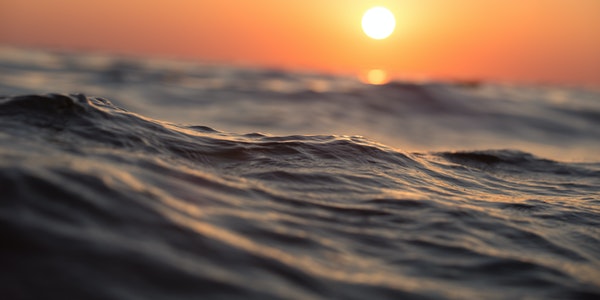What is the most favorite filter for landscape photographers? Of course it is a polarizer~ The reason is also very simple, its effect is really great!
It can make the clouds more detailed, while also making the scenery more vivid: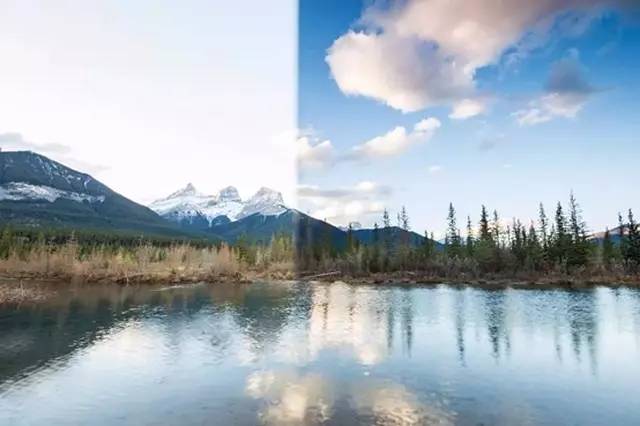
(left) without polarizer, (right) with polarizer
It can make the water crystal clear, while still making the scenery more vivid: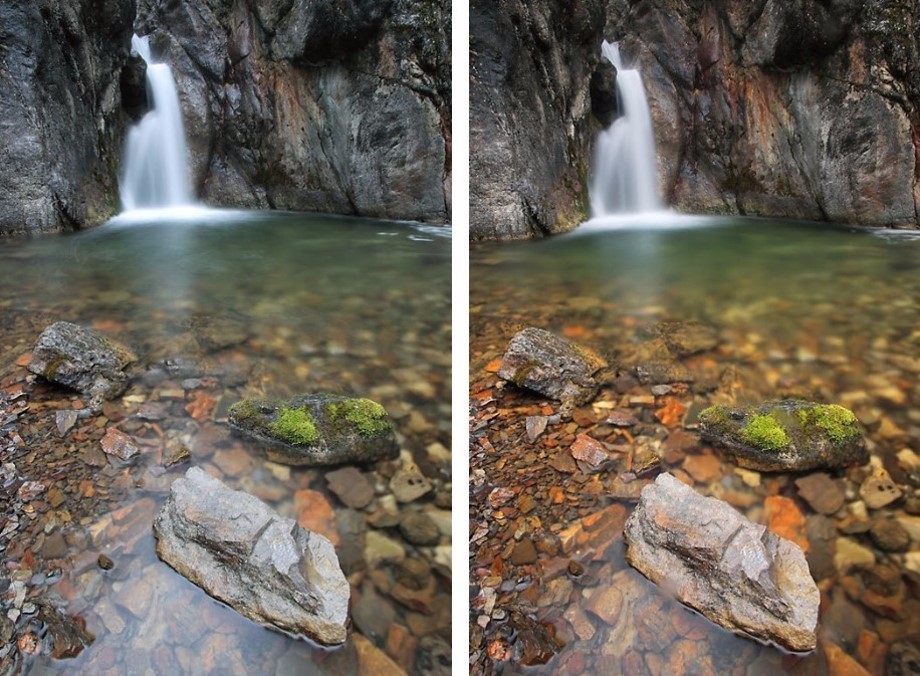
(left) without polarizer, (right) with polarizer
Why are polarizers so powerful? We have to start with how it basically works.
Table of Contents
1. The Working Principle of Polarizer
Sunlight hits the scene, reflects and enters the lens at an angle. Too much cluttered white reflections is the equivalent of adding a lot of white to the picture. This naturally reduces color saturation.
If you remove these unwanted reflections, the photo will be clear and transparent, which is exactly what polarizers do.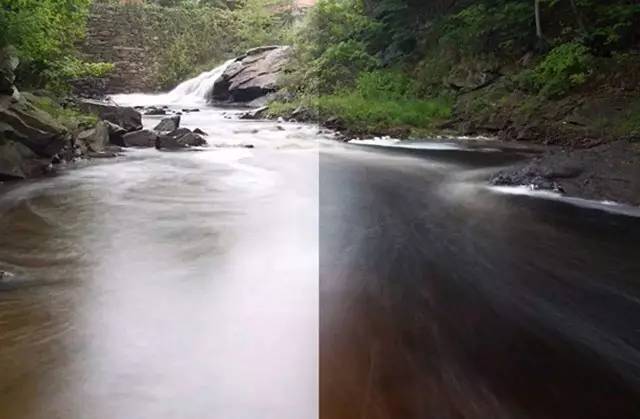
(left) without polarizer, (right) with polarizer
The polarizer consists of two rotatable lenses, which contain micro-grid gratings. That only allow the light parallel to the grid to pass through, thereby filtering the light.
Structurally, the polarizer is divided into two rotatable rings. The upper ring is a linear polarizer with a grid grating. And rotating the upper ring can effectively adjust the effect of filtering scattered light.
2. The Main Purpose of Polarizer
Polarizers have four main uses.
First, polarizers eliminate surface reflections from transparent objects such as water and glass.
When shooting through glass, when you need to shoot underwater scenes through the water, this feature is beyond the reach of any post-production software – they can’t recall scenes that were not captured in the previous period.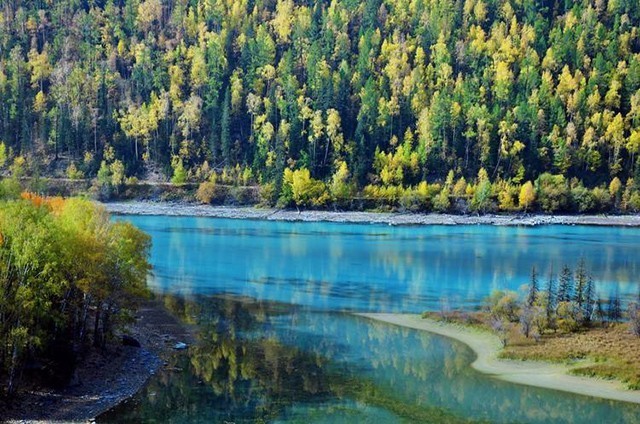
Shooting through glass is difficult to do without a polarizer
The polarizer can block part of the polarized light in the sky, darkening the tone of the blue sky.
When the picture contains a large area of sky, the polarizer reduces the contrast between the high-brightness sky during the day and the ground scene, making the contrast between the two more harmonious.
At the same time, the polarizer can also improve the tone of the blue sky, making the color of the sky more saturated, so that the white clouds are also more prominent.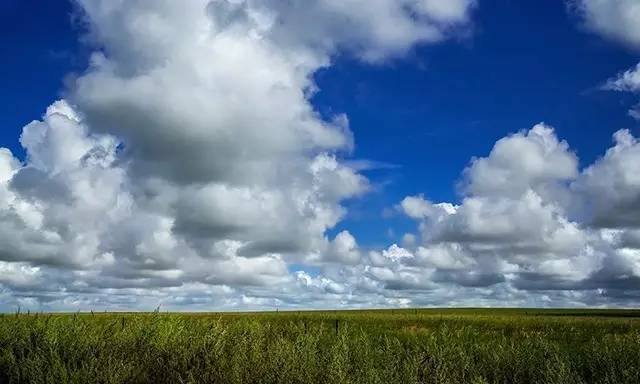
The polarizer can eliminate the scattered stray light on the surface of non-metallic objects, so that the object can show its original clarity, texture and color saturation in bright light environment.
The flowers, trees, and wet rock surfaces in the picture below, if you do not use polarizers, will produce white reflections under sunlight, which will suppress the original color and texture of the object.
After the polarizer eliminates the dazzling reflections, the original saturated hue and rich level of detail of the object are revealed.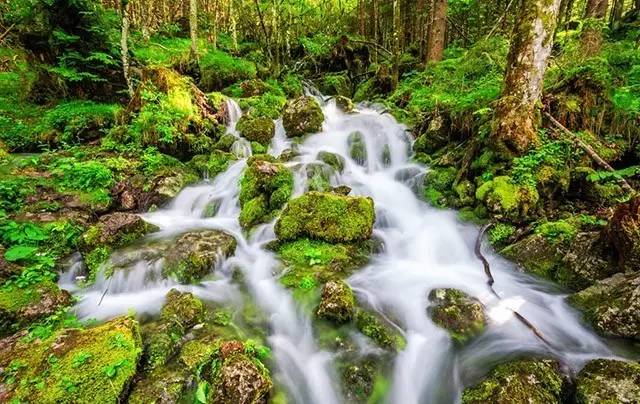
Polarizers can absorb stray light in various directions reflected by fog or dust in the atmosphere.
A large part of the occlusion of fog and haze on the field of view comes from the high-brightness stray light reflected by suspended particles. After filtering by a polarizer, the vision in fog and haze will be better: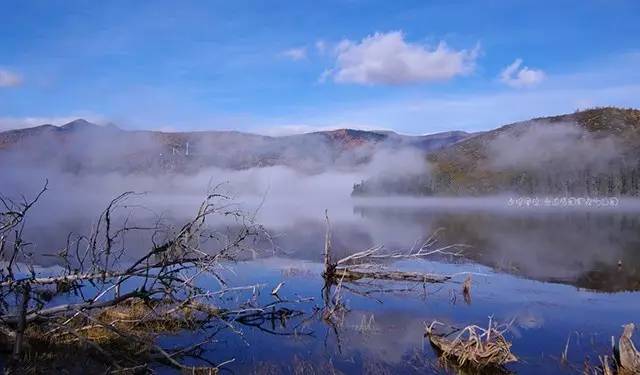
It is precisely because the polarizer has so many irreplaceable functions that many landscape photographers regard it as a “on-camera mirror” and never take it off.
After talking about the function of the polarizer, it’s time to talk about some precautions for the use of the polarizer.
3. Pay Attention to Adjusting the Angle
As mentioned before, the essence of the polarizer is to selectively filter the light through the grating. The amount of light reflected and the part of the light reflected are different depending on the angle of rotation.
Among the several functions of the polarizer, it is very important to adjust the angle.
For example, when you shoot through glass and need to eliminate glass reflections, the rotation angle will make your picture “different”:
Comparison of effects at the same angle:
Above: No polarizer
Bottom: with polarizer
Adjusting the angle does not just refer to rotating the upper circle of the polarizer. Your shooting position and the orientation of the lens are also an important factor that affects the effect of the polarizer.
For example, when you’re photographing the sky, it’s best to have the lens at a 90° angle to the sun. This can eliminate the most scattered light, and the picture effect is also the best.
You can point your hand at the sun in a gun-shooting position, so just keep the lens parallel to your thumb and you’ll be able to find the best position for the polarizer.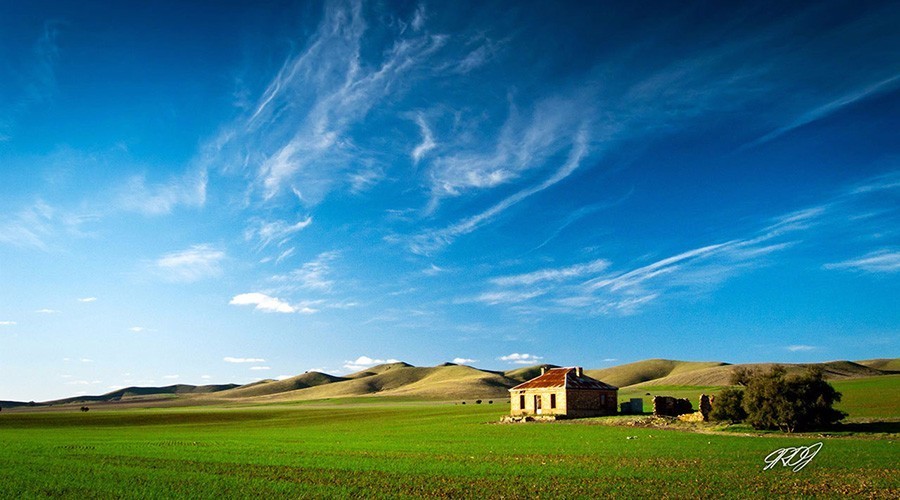
You can slowly adjust the angle as you shoot, or you can take a few more shots at different angles. Go back to the computer and zoom in to see the comparison and filtering, and select the one with the best de-lighting effect.
However, the elimination of reflections is not the more the better. Especially when shooting large green plants, excessive removal of reflections may result in unrealistic colors and loss of three-dimensionality.
As shown in the figure below, after excessively eliminating the reflection, the leaves of the trees are too saturated, false, and have no details. It looks very “flat”, but the effect is not very good.
4. Don’t Go with a Wide Angle
Polarizers are not suitable for wide-angle use, and the focal length should preferably be greater than 35mm, otherwise, just like applying a hood, it is very prone to vignetting.
Even if there is no vignetting, or you are not afraid of vignetting at all, the wide-angle panorama effect is very weird. Let’s look at an example: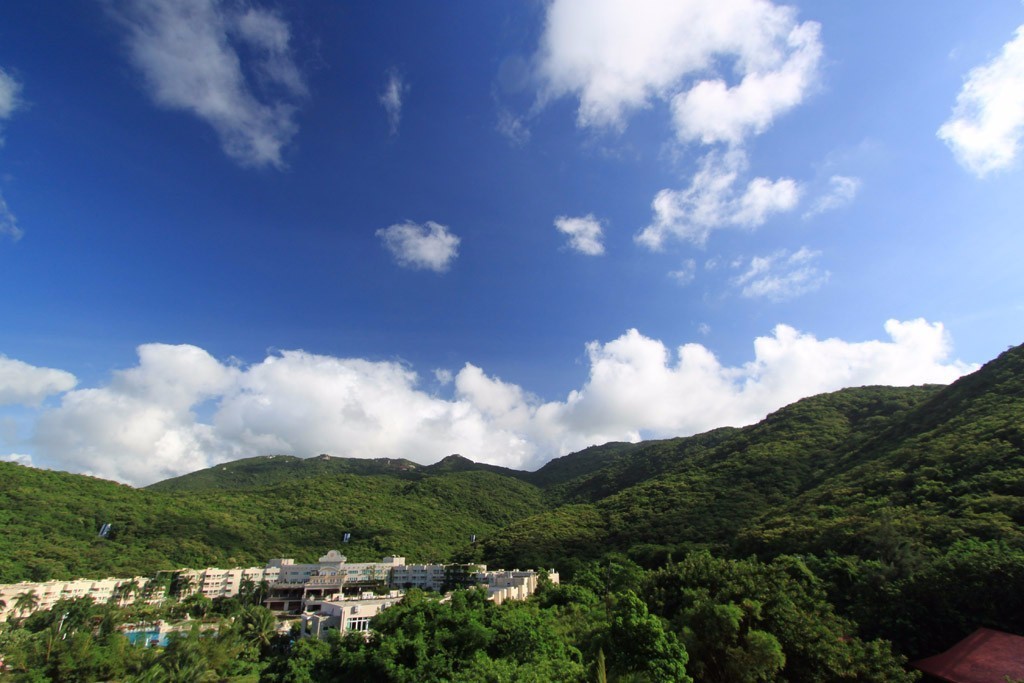
As shown in the figure above, we can see that due to the large field of view, the extinction of the polarizer at different angles is different. And the blue sky becomes uneven in color, which is particularly awkward.
5. Other Notes
First, polarizers cannot eliminate reflections from metal surfaces. Because reflections from metal surfaces are polarized light rather than unpolarized scattered light from other surfaces.
Polarizers are suitable for shooting through glass, except for some special glasses, such as aviation glass for aircraft portholes. This type of glass has a special coating that looks like this when a polarizer is used:
Another point to note is that the polarizer will filter out a lot of light after all. That will produce some kind of dimming effect, which will reduce the exposure by about two stops.
So, you need to adjust shooting parameters such as shutter speed and ISO accordingly. Or use exposure compensation to maintain the brightness of the picture and ensure normal exposure.
